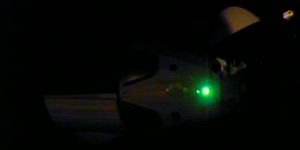Using Nanomachines to Track the Physics of a Cell's Trajectory
Cells are full of a huge variety of structures and molecules that all work together, but many techniques will only allow researchers to study a few of them at any one time. Scientists have been developing tools that can provide a bigger picture of the many processes and signals moving through a cell at any time. To that end, investigators created an extremely small tracking device that can be inserted into mammalian cells. It has given scientists an unprecedented look at how one cell starts to divide to form an organism. It may also eventually provide insight into aging and diseased cells too. The work has been reported in Nature Materials.
In this study, the researchers injected a silicon-based nanodevice into mouse egg cells along with sperm. The healthy eggs were thus fertilized, so each began to divide in two as usual, but they carried the nanodevice inside as that occurred. The device has eight flexible extensions that can precisely measure the forces that push and pull the inside of the cell; this can show how the stuff inside the cell moves around.
"This is the first glimpse of the physics of any cell on this scale from within," said the study leader Professor Tony Perry of the Department of Biology and Biochemistry at the University of Bath. "It's the first time anyone has seen from the inside how cell material moves around and organizes itself."
At only 22 nanometers, the devices are as thin as some of the structural parts of the cell and they are very flexible (a mouse egg cell is larger than average cells at about 100 microns). The devices can collect information about the movement of cell cytoplasm as it becomes a two-cell embryo. This can help researchers learn more about how this relates to cell function.
"The behavior of intracellular matter is probably as influential to cell behavior as gene expression. From studies in biology and embryology, we know about certain molecules and cellular phenomena, and we have woven this information into a reductionist narrative of how things work, but now this narrative is changing," said Perry.
Biologists have written the story of the mammalian cell, but physics has been missing, Perry said. Physics can help us learn about the physical forces driving the process in cells.
"We can now look at the cell as a whole, not just the nuts and bolts that make it."
The scientists tracked the cell with video. "Sometimes the devices were pitched and twisted by forces that were even greater than those inside muscle cells," said Perry. "At other times, the devices moved very little, showing the cell interior had become calm. There was nothing random about these processes - from the moment you have a one-cell embryo, everything is done in a predictable way. The physics is programmed."
Sources: AAAS/Eurekalert! via University of Bath, Nature Materials









